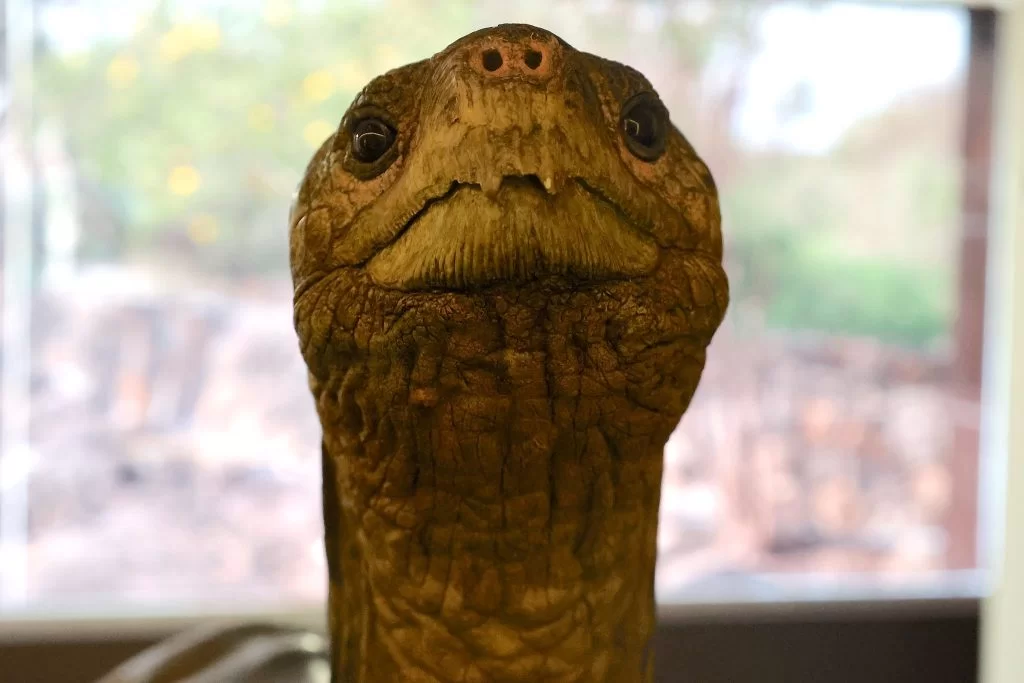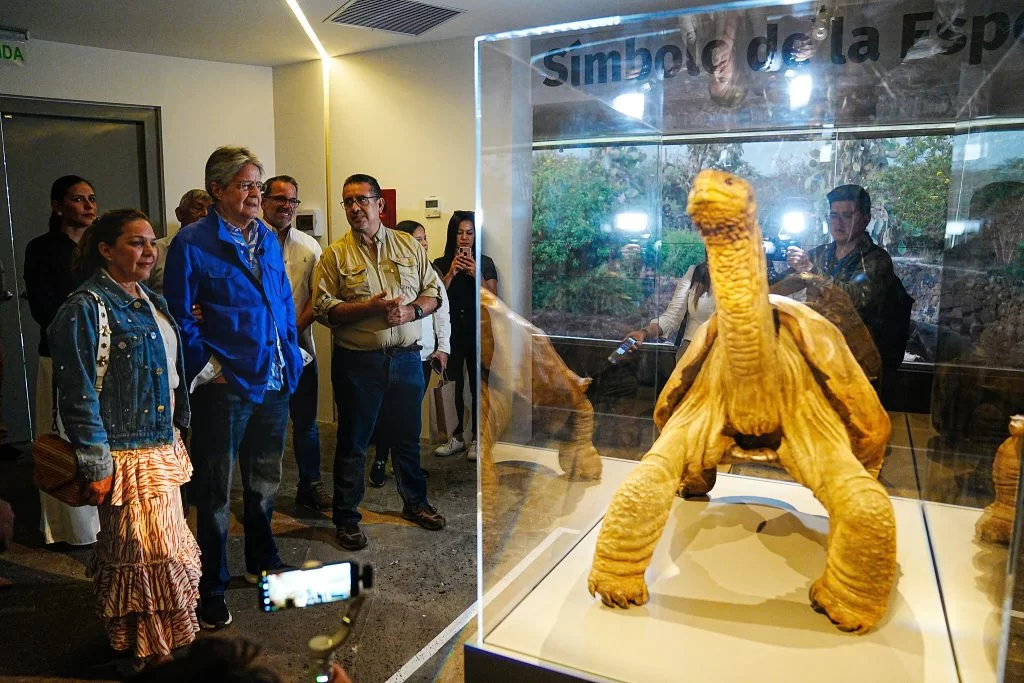The Symbol Of Hope Hall is located on “La Ruta De la Tortuga”, an interpretive trail of the Galapagos National Park Directorate. Galapagos Conservancy funded the refurbishment. It was done under strict guidelines set by George Dante, the expert taxidermist responsible for Lonesome George’s taxidermy process that lasted nearly three years.
Lonesome George, a Pinta Island reptile, is still a very popular name ten years after his passing. Washington Tapia (General Director of Galapagos Conservancy) led the process. He stated that every effort was made to preserve Lonesome George’s taxidermied body, which is a symbol for conservation efforts in Galapagos.
A group of scientists from the University of California, Berkeley visited Pinta Island in 1971 and discovered the only giant tortoise to have ever lived on the island. In 1972, a new expedition was set up to Pinta to find the specimen. It was named Lonesome George and transferred to the Galapagos National Park Breeding Center. The chelonian spent the rest of his days in his new home until his death from natural causes on June 24, 2012. He left no descendants.

Close-up of Lonesome George © Galápagos Conservancy



